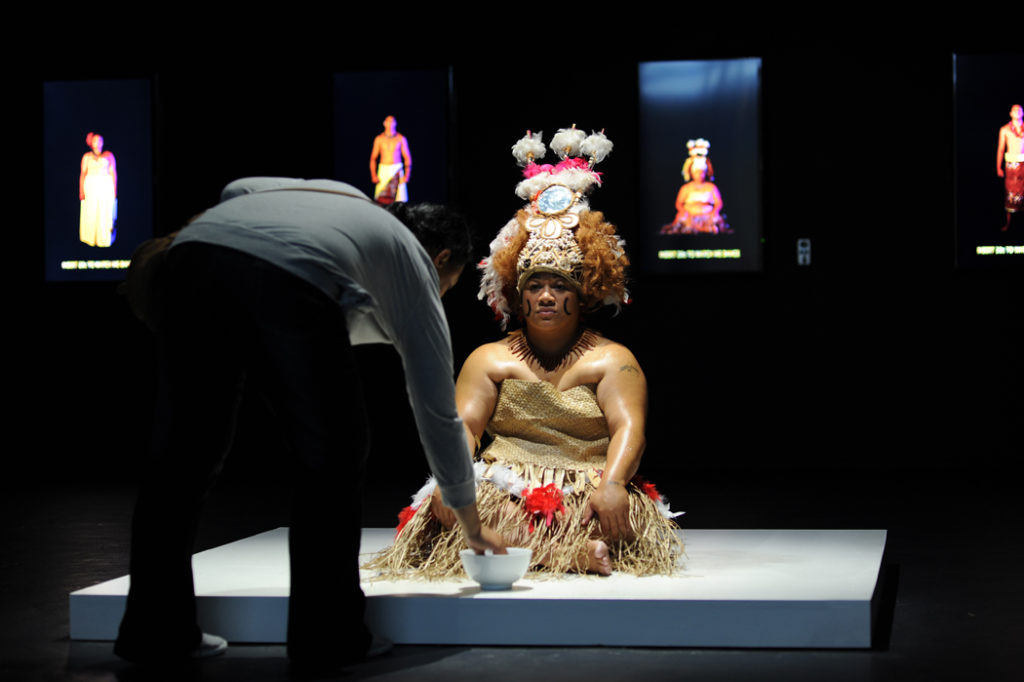In 2011, Samoan artist Shigeyuki Kihara travelled to Germany to explore museum archives relating to the German administration of Samoa between 1900 and 1914. There, Kihara learned about the Völkerschau, a popular form of colonial entertainment, where Samoan men, women, and children were displayed to European audiences as part of a ‘human zoo’. Kihara’s Culture for Sale brings the Völkerschau into the current post-colonial moment, to address the legacies of such practices, especially in the on-going commercial exploitation of Samoan culture and people. The work consists of live performances and a video installation. In the performances, traditionally attired dancers perform when money is placed in a bowl at their feet. With the video installation, similarly attired performers dance when money is deposited into a coin slot, the financial exchange supposedly implicating viewer and Gallery.



















